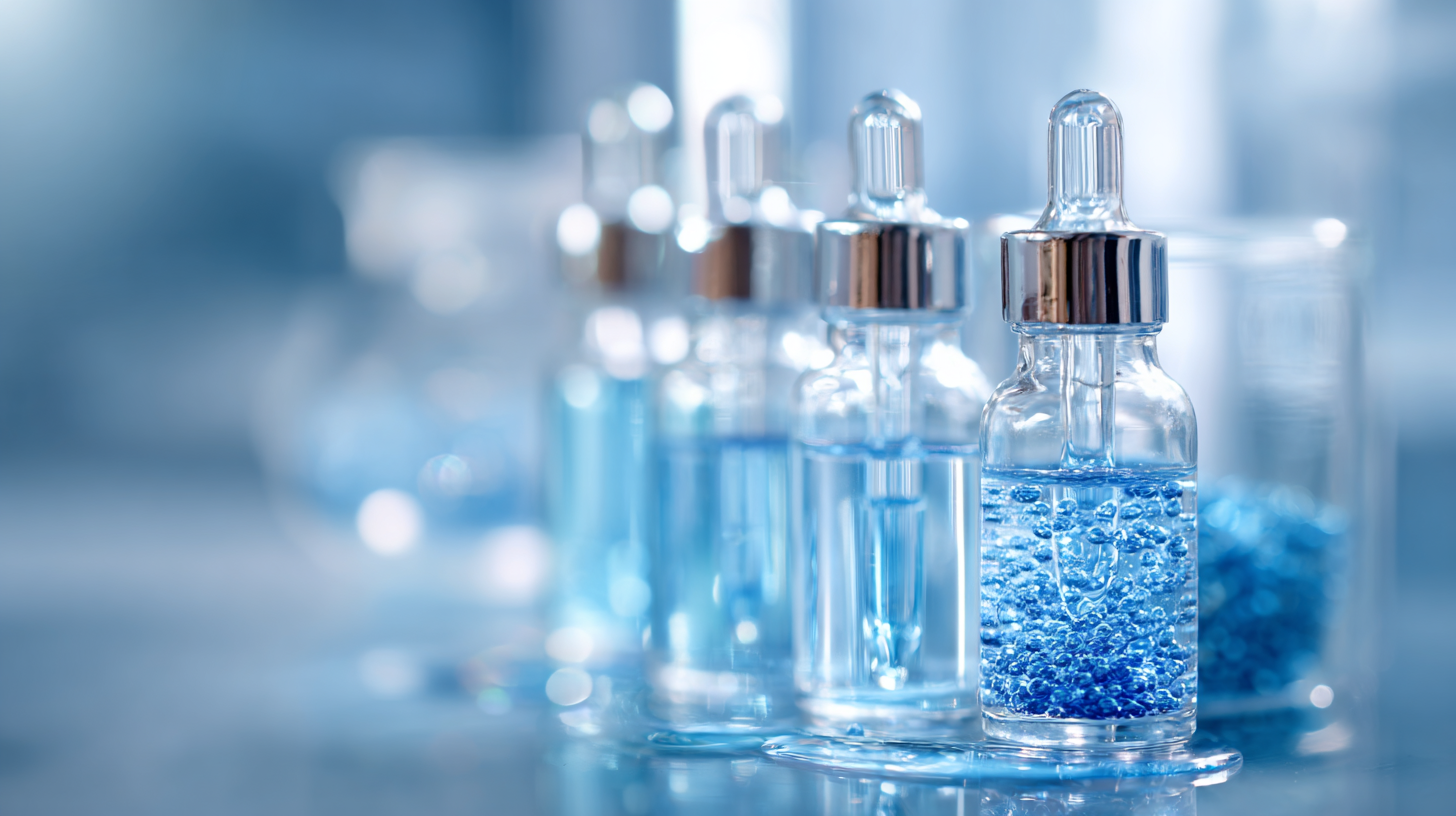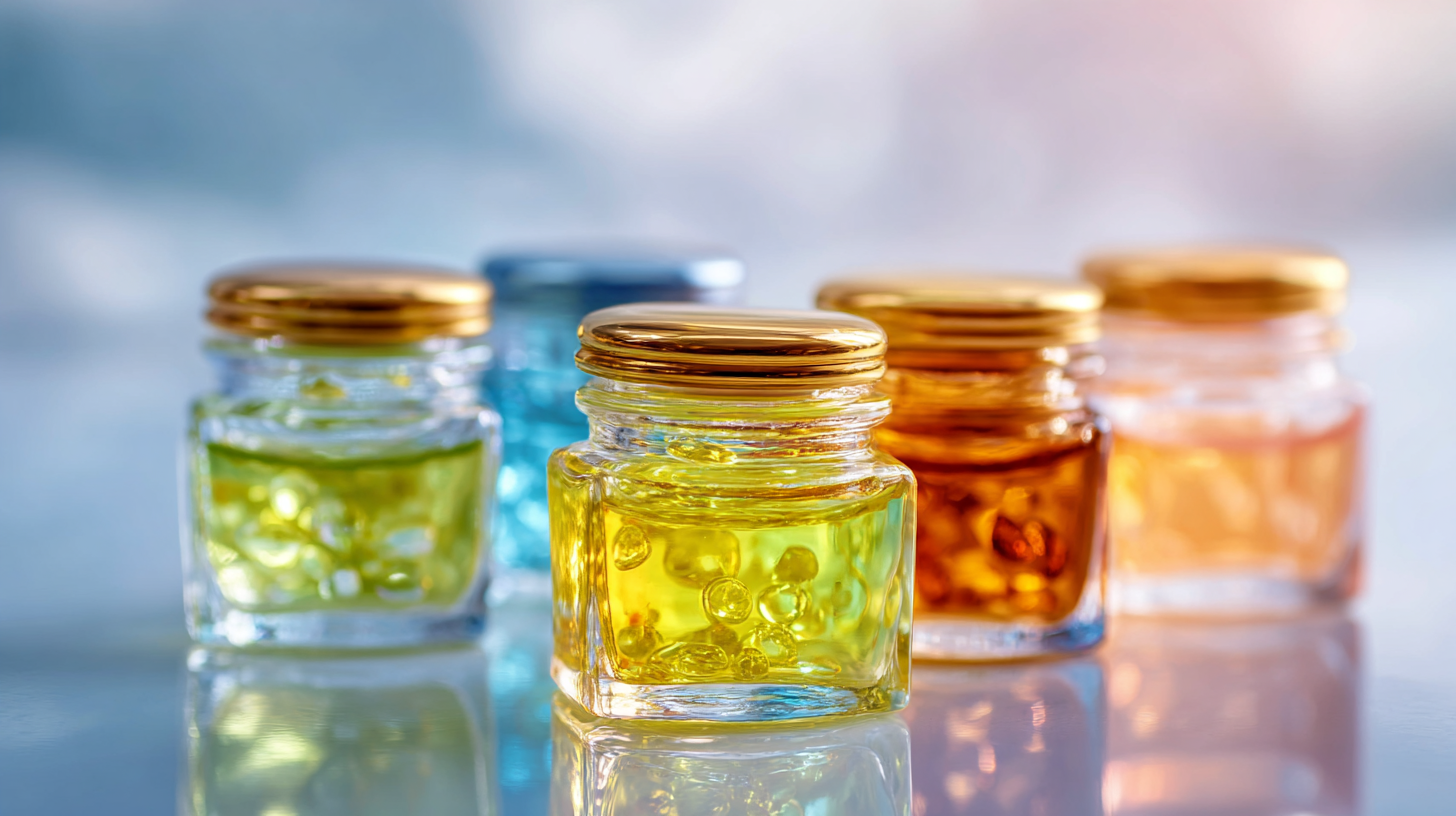
Discover the Top Examples of Best Hyaluronic Acid Products for Global Buyers
Hyaluronic Acid has emerged as a leading ingredient in the global skincare market, celebrated for its exceptional hydrating properties and versatility. According to a recent report by Grand View Research, the global hyaluronic acid market is projected to reach approximately $10.4 billion by 2027, growing at a remarkable CAGR of 8.1% from 2020. This surge in demand highlights consumers’ increasing preference for products that deliver both immediate and long-lasting hydration. Moreover, with skin aging becoming a prominent concern across various demographics, the rise of clean beauty and natural ingredients has intensified the focus on hyaluronic acid's effectiveness. As beauty enthusiasts and consumers worldwide seek out the best hyaluronic acid products, understanding the top examples available in the market can help them make informed decisions tailored to their skincare needs.

The Importance of Hyaluronic Acid in Skincare Products
Hyaluronic acid (HA) has emerged as a powerhouse ingredient in the skincare industry, renowned for its exceptional effectiveness in hydration and skin rejuvenation. According to a market report by Grand View Research, the global hyaluronic acid market is expected to reach USD 8.1 billion by 2025, reflecting a compound annual growth rate (CAGR) of 7.9%. This surge in popularity is largely attributable to HA’s unique ability to hold up to 1,000 times its weight in water, making it an essential component for maintaining skin moisture and elasticity.
Moreover, the significance of hyaluronic acid extends beyond mere hydration. Research published in the Journal of Cosmetic Dermatology highlights that HA not only helps in reducing the appearance of fine lines but also promotes skin healing and repair processes. It’s no surprise that leading skincare brands are increasingly incorporating HA into their formulations, catering to a growing demand from consumers who are more aware of ingredient benefits. With this trend showing no signs of slowing down, hyaluronic acid remains a vital ingredient for anyone looking to achieve youthful, plump, and healthy skin.
Discover the Top Examples of Best Hyaluronic Acid Products for Global Buyers - The Importance of Hyaluronic Acid in Skincare Products
| Product Name | Hyaluronic Acid Concentration (%) | Formulation Type | Skin Type | Key Benefits |
|---|---|---|---|---|
| Hydrating Serum A | 2.0% | Serum | All Skin Types | Deep hydration, plumps skin, reduces fine lines |
| Moisture Cream B | 1.5% | Cream | Dry and Sensitive Skin | Intense moisture, soothes irritation, boosts elasticity |
| Hydra Boost Gel C | 3.0% | Gel | Oily and Combination Skin | Lightweight hydration, controls oil, improves texture |
| Night Repair Oil D | 1.0% | Oil | Normal to Dry Skin | Restores moisture, regenerates skin overnight |
| Revitalizing Mist E | 0.5% | Mist | All Skin Types | Refreshes skin, hydrates on-the-go |
Key Features to Look for in Top Hyaluronic Acid Products
When searching for the best hyaluronic acid products, it’s essential to understand the key features that can make a significant difference in effectiveness. Firstly, look for the concentration of hyaluronic acid in the formula. A higher concentration typically offers better hydration benefits, as it helps to attract and retain moisture in the skin. Products with a concentration of 1% to 2% are generally effective for most skin types, providing a plump and youthful appearance.
Another crucial aspect to consider is the molecular weight of hyaluronic acid. Products containing a blend of low, medium, and high molecular weight hyaluronic acid can offer multiple levels of hydration. Low molecular weight penetrates deeper into the skin for thorough hydration, while high molecular weight forms a protective barrier on the surface, locking in moisture. Additionally, it’s beneficial to choose products that come fortified with complementary ingredients like vitamins and antioxidants, which can enhance the overall effectiveness and provide added skin benefits.

Comparative Analysis of Global Hyaluronic Acid Brands
When it comes to skincare, hyaluronic acid has risen to prominence due to its impressive ability to retain moisture, making it a favorite among consumers and brands alike. According to a 2022 report by Grand View Research, the global hyaluronic acid market is projected to reach USD 14.4 billion by 2028, growing at a compound annual growth rate (CAGR) of 5.9%. This growth reflects the increasing awareness of the ingredient's benefits and the expanding range of products available worldwide.
Comparing various hyaluronic acid brands reveals significant differences in formulation, concentration, and efficacy. For instance, renowned brands like Neutrogena and The Ordinary offer products with varying concentrations of hyaluronic acid—Neutrogena’s Hydro Boost Gel Cream features 2% hyaluronic acid, providing deep hydration, while The Ordinary’s Hyaluronic Acid 2% + B5 utilizes three different molecular sizes for multi-layered hydration. Furthermore, a study published in the Journal of Drugs in Dermatology demonstrated that formulations with higher molecular weight hyaluronic acid could enhance skin hydration and elasticity more effectively than lower concentrations, paving the way for innovative products designed for diverse skin types and conditions.

Consumer Feedback: Which Hyaluronic Acid Products Shine?
When it comes to skincare, hyaluronic acid (HA) has taken the spotlight for its incredible ability to hydrate and plump the skin. In the quest to find the best hyaluronic acid products, consumer feedback serves as a valuable resource. Many users have raved about serums that deliver instant hydration and a noticeable boost in skin texture. Products like The Ordinary's Hyaluronic Acid 2% + B5 and Neutrogena's Hydro Boost Gel Cream are frequently mentioned for their lightweight consistency and effectiveness in retaining moisture.
Tips: When selecting a hyaluronic acid product, consider your skin type. For oily skin, a lightweight gel might be more suitable, while cream-based formulas can benefit those with dry or mature skin. Additionally, check for added ingredients like vitamin C or peptides that can enhance overall skincare benefits.
Another point of feedback consumers often highlight is the importance of how to incorporate hyaluronic acid into a skincare routine. Applying it on slightly damp skin can amplify its hydrating effects, allowing for better moisture retention. Layering it under a moisturizer seals in hydration, ensuring your skin remains supple throughout the day.
Understanding Industry Standards for Quality Hyaluronic Acid Formulas
When it comes to hyaluronic acid products, understanding industry standards is crucial for global buyers to ensure they are choosing high-quality formulas. According to a report by Grand View Research, the global hyaluronic acid market size was valued at approximately USD 10.69 billion in 2022, with expectations to expand at a CAGR of 8.8% from 2023 to 2030. This growth is driven by the increasing demand for skincare and cosmetic formulations that offer enhanced hydration and anti-aging benefits.
Quality hyaluronic acid formulations should adhere to strict industry standards, including purity levels and molecular weight. The Cosmetic Ingredient Review (CIR) panel assesses the safety of ingredients used in cosmetics, emphasizing that high-purity hyaluronic acid with a low degree of contamination leads to better product efficacy and skin compatibility. Products that utilize hyaluronic acid with a molecular weight below 50 kDa are more effective at penetrating the skin, offering deeper hydration. Buyers should also look for certifications such as ISO or GMP compliance, which indicate that the manufacturing process meets high-quality standards.
Moreover, a study published by the Journal of Dermatology shows that products containing hyaluronic acid can improve skin hydration by up to 30% after just one application. This emphasizes the importance of selecting products that not only claim to contain hyaluronic acid but also utilize scientifically supported formulations to maximize skin benefits. By prioritizing these industry standards, global consumers can make informed decisions while navigating the expanding market of hyaluronic acid products.
Top Hyaluronic Acid Products Analysis
This chart illustrates the efficacy ratings of various important dimensions related to hyaluronic acid products based on consumer experience. Each dimension represents how effectively these products perform in terms of hydration level, skin firmness, fine lines reduction, elasticity improvement, and moisture retention.
